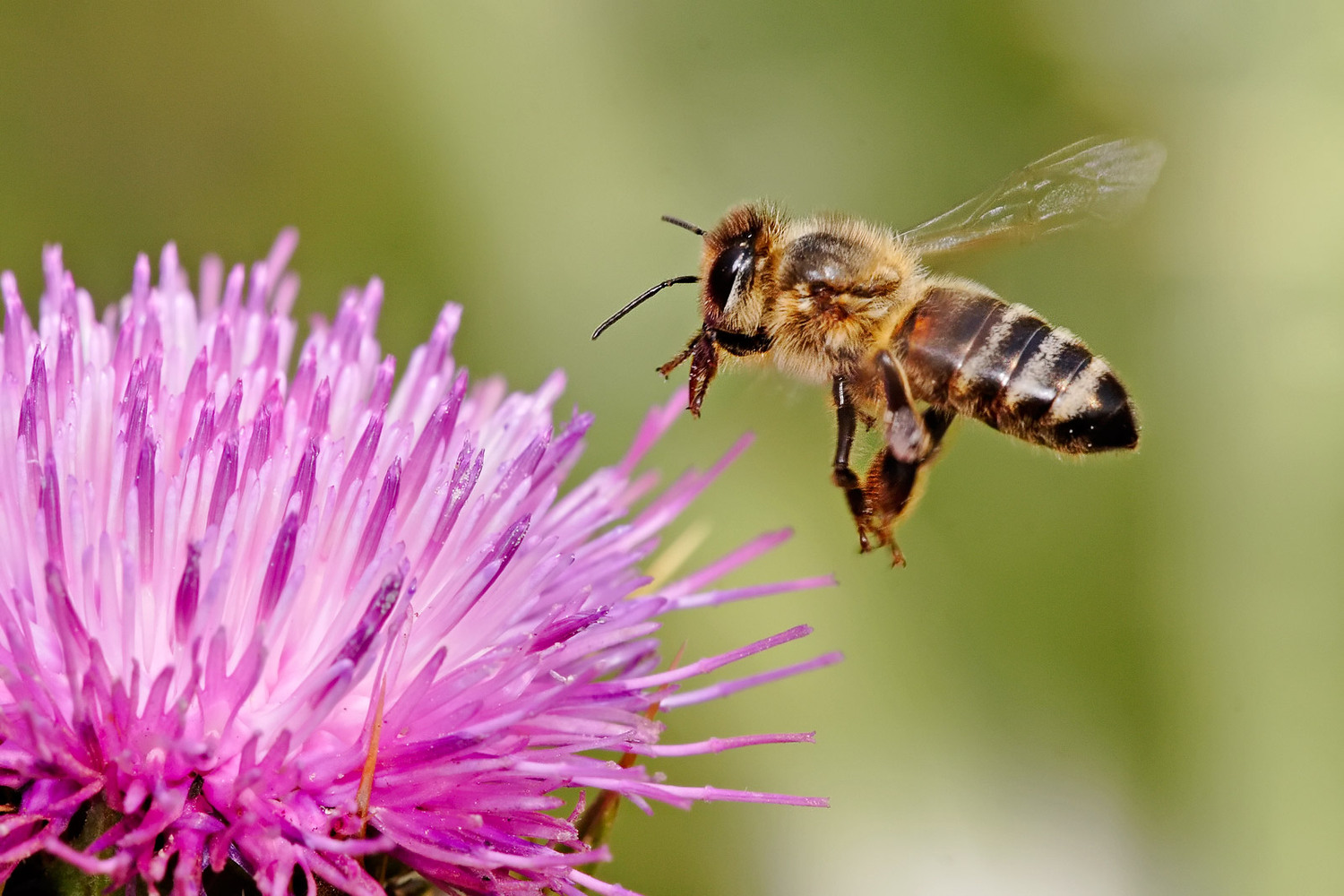Bees bee-fuddled by caffeine
Interview with
Caffeine is a great way to wake you up in the morning, but it's not just humans  who hanker for the enlivening effect of a cup of coffee. According to researchers at the University of Sussex, plants have got honeybees hooked on caffeine. By lacing their nectar with the drug, caffeine-craving insects are lured back repeatedly to the same plants for a drink, pollinating them in the process, as discoverer Margaret Couvillon explains to Charis Lestrange...
who hanker for the enlivening effect of a cup of coffee. According to researchers at the University of Sussex, plants have got honeybees hooked on caffeine. By lacing their nectar with the drug, caffeine-craving insects are lured back repeatedly to the same plants for a drink, pollinating them in the process, as discoverer Margaret Couvillon explains to Charis Lestrange...
Margaret - We found in our study that plants may be tricking their pollinators - in this case, the honeybee - into foraging and recruiting in ways that are benefitting not necessarily the bee but the plant. This particular trickery seems to be happening through the action of caffeine which is a compound that's found in a lot of plants in very high concentrations in the leaves and the seeds, and the stems. It tastes bitter so usually, it has the job of detracting herbivores. But it's also found in low concentrations in nectar. Nectar, unlike leaves is made to be eaten. What we have found is that the presence of caffeine in the nectar of some of these plants can be causing the honeybees to behave as if the nectar is of much better quality than it really is.
Charis - These plants seem to be tricking the bees into getting their nectar then.
Margaret - Yeah, exactly. So, caffeine is pharmacologically active and it seems to be acting in the reward pathways of the bees. Across the board in all the measures of foraging and recruitment, we see that caffeine has a huge response in making the bees more loyal and more faithful to that particular source.
Charis - How did you measure these findings?
Margaret - What we did is we trained honeybee foragers to collect from either one of two feeders. They both had a sweet sucrose solution which acts like nectar and they were equally sweet. But one feeder additionally had caffeine in it in a concentration that's normally found in nectar. The bees were trained to one of these two locations and they foraged at it for 3 hours and then we collected data on their foraging behaviour, on their recruitment behaviour that was going on back in the hive, and then starting the next day on some post exposure behavioural effects as well.
Charis - What did you find from these methods that you used?
Margaret - Compared to the control feeder and remember of course, they are of equal sweetness. Honeybees are very sensitive to sweetness and so, if we see any behavioural differences, it would be because of the caffeine not because of the sweetness. We found that between the two, decaffeinated forage caused the honeybees to forage more. They performed many more waggle dances and they were both more likely to perform a waggle dance, and then they performed more of them, and these are the recruitment events that tell their nest mates that there's something good in the landscape that they need to exploit. And then the next day after the feeders were empty, we saw that the exposure of caffeine had a post exposure effect for many days. So the bees that had foraged on caffeine came back just to check the feeder both more number of times and for more days. This is a behaviour that's called persistency. And then lastly, the bees that had foraged on caffeine were less likely to explore the area nearby. When they would come back to check the feeder, they only would check their feeder whereas the bees that had been trained to the control were more likely to explore the area nearby. So, we saw huge behavioural effects.
Charis - Did you find that this affected many of the bees in the colony? Did more bees want to go to the caffeinated nectar?
Margaret - Because of the way our experiment was setup, we couldn't actually monitor what's called the recruits. So the bees that were not trained but just got the information that there was something good. Because there was such a big effect on the number of dances, we would predict that there would be more new bees coming from the hive to check out the caffeinated versus the decaffeinated.
Charis - What conclusions can we draw from this then?
Margaret - It seems that caffeine - this compound that's interestingly found in nectar - it's causing the bees to overestimate the forage quality and makes them forage and recruit in ways as if it were of much better quality than for example the control. Because of this, the colony is perhaps foraging in suboptimal ways. So, it's not exploiting the resources equally even though they are equal energetically. This suggests that maybe the relationship between the pollenator r and the plant is less about cooperative mutualism and more of an exploitation.
- Previous Welcome to Mars
- Next Babies use their tongues to listen










Comments
Add a comment